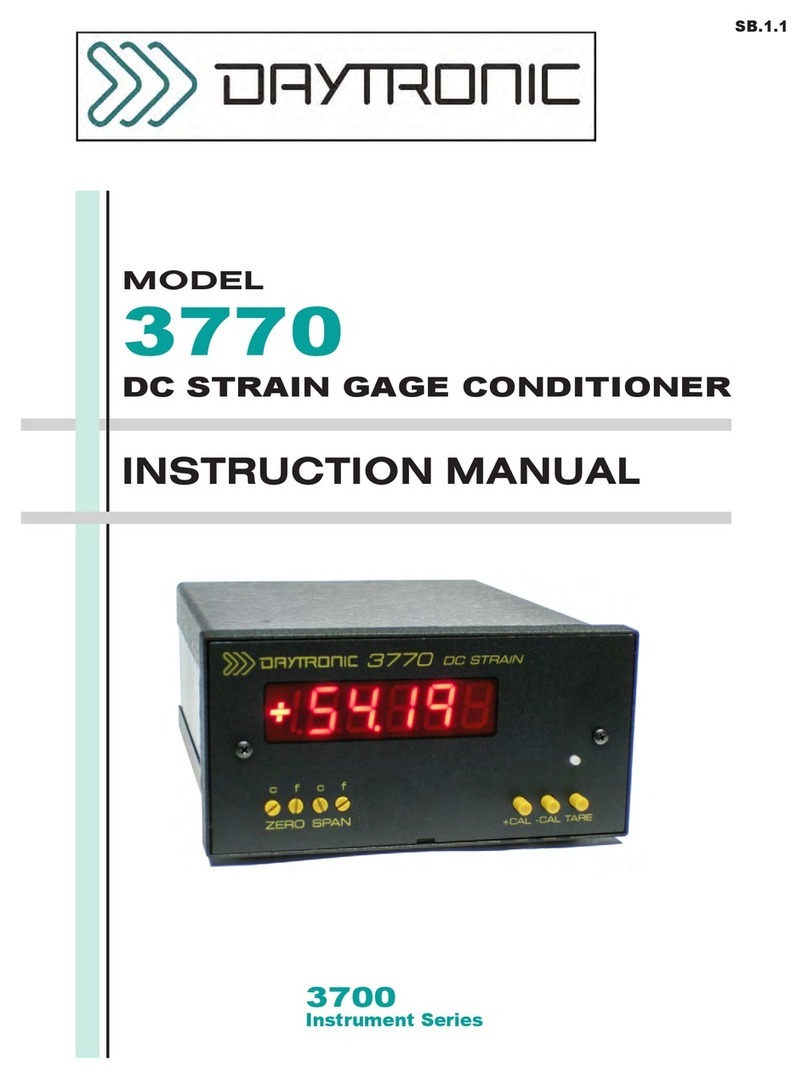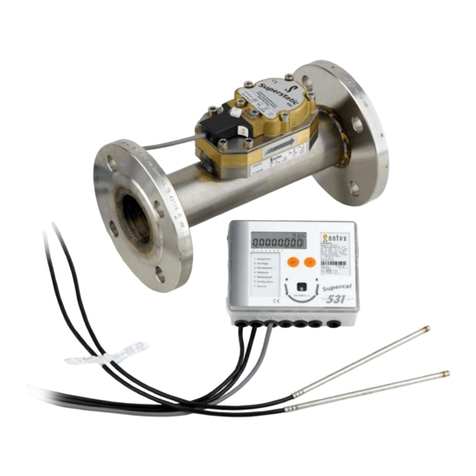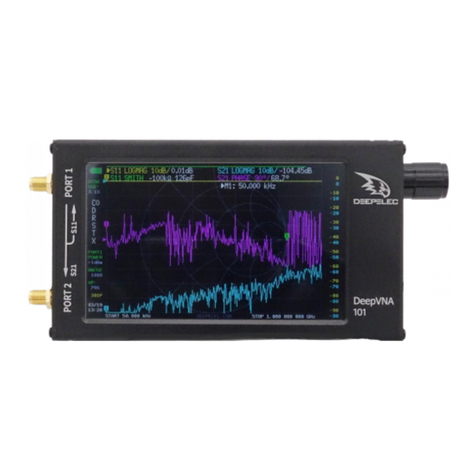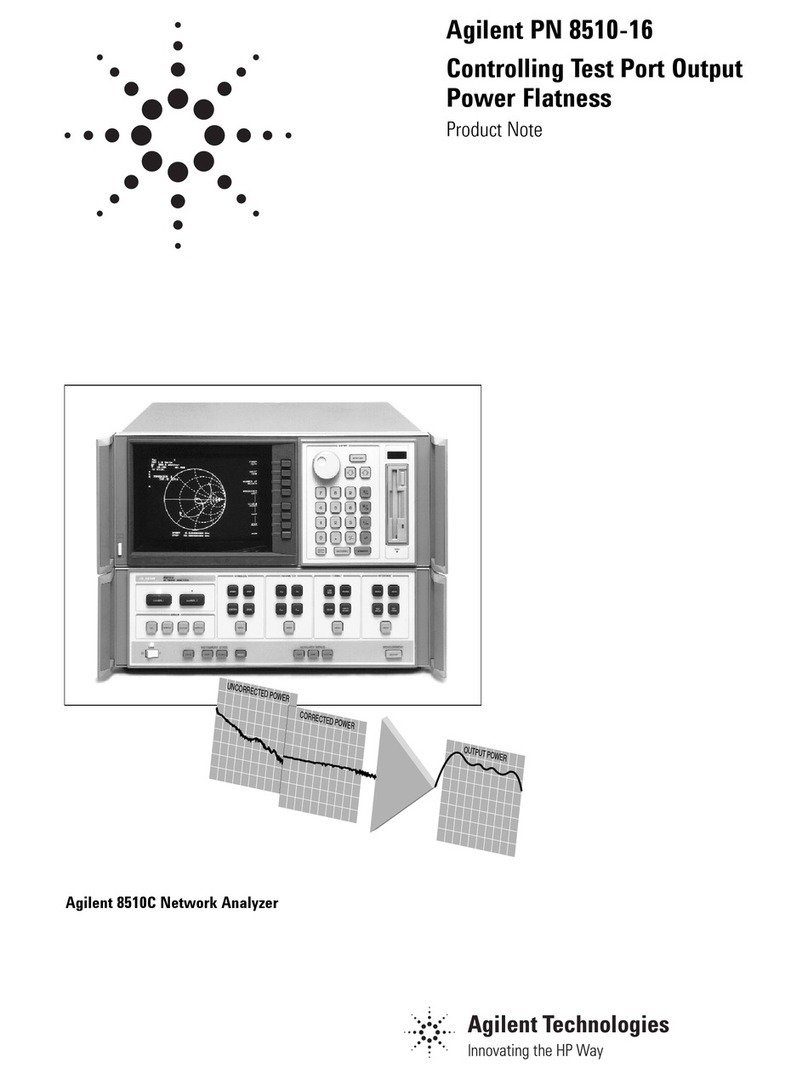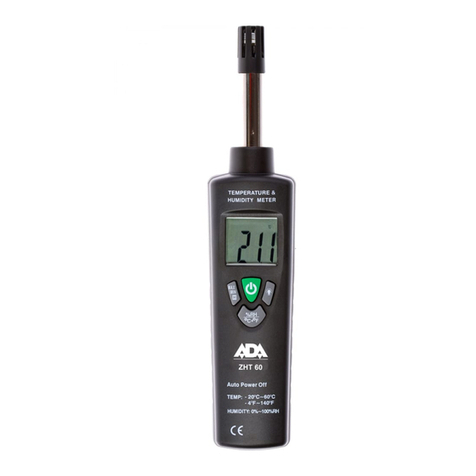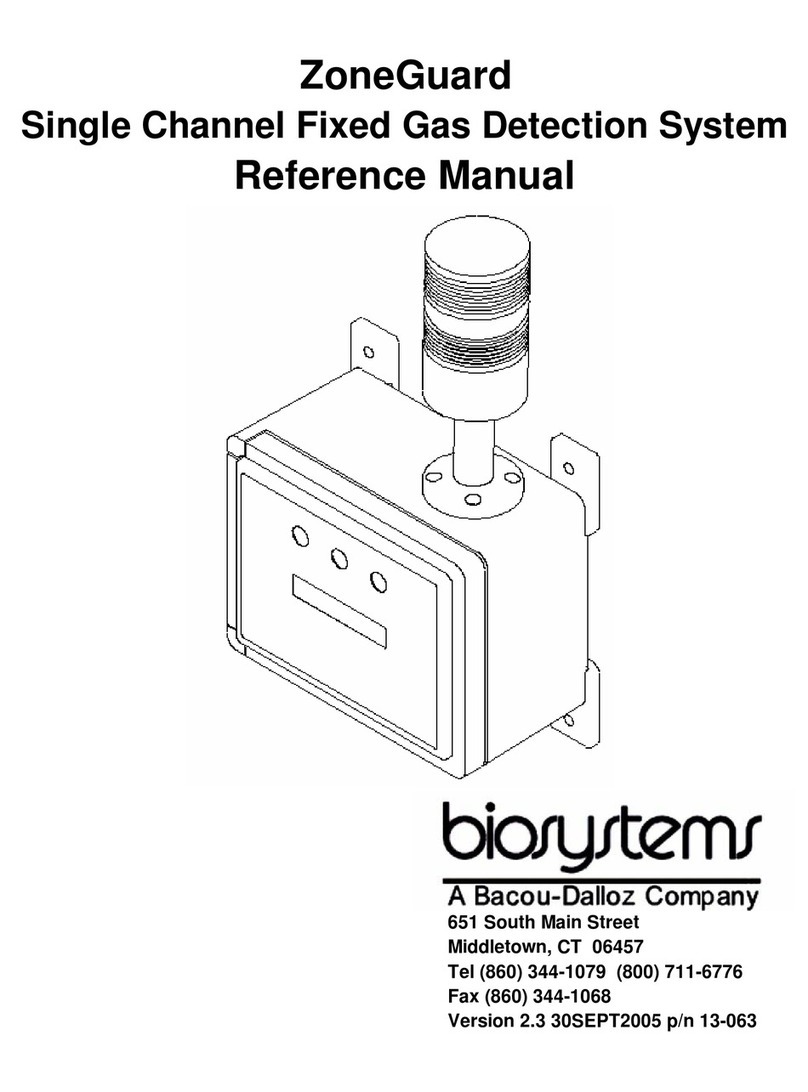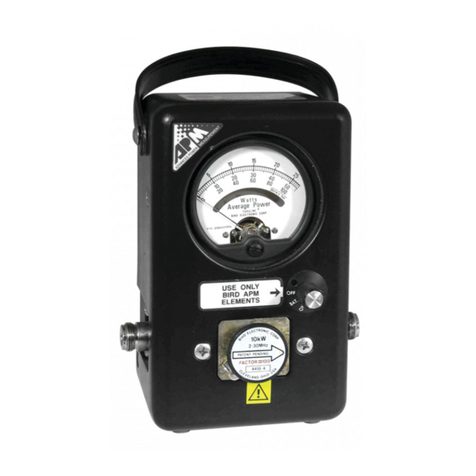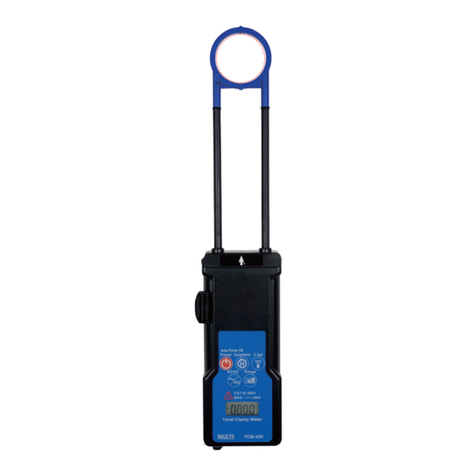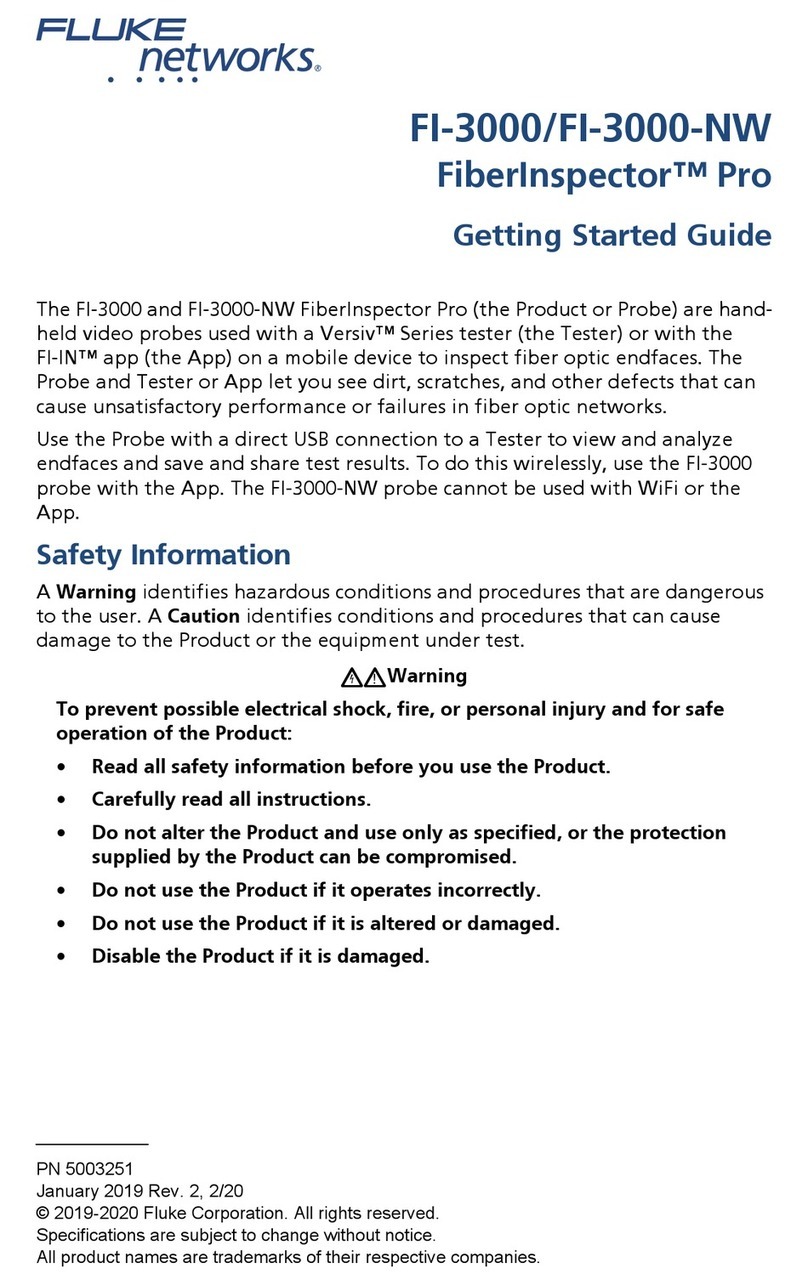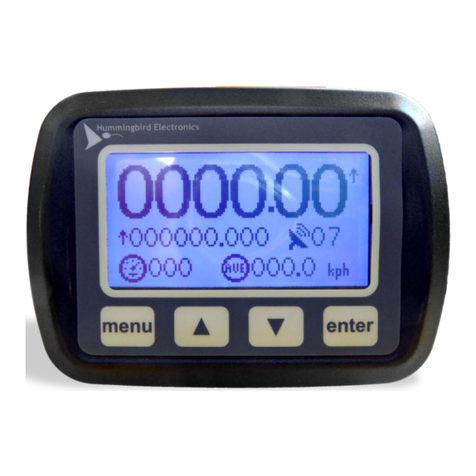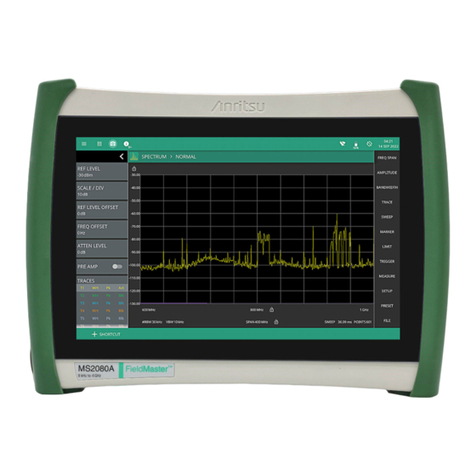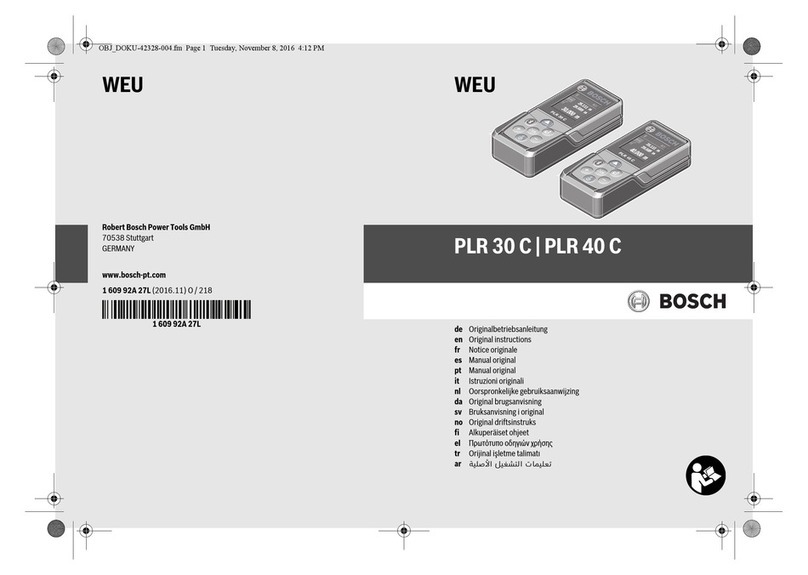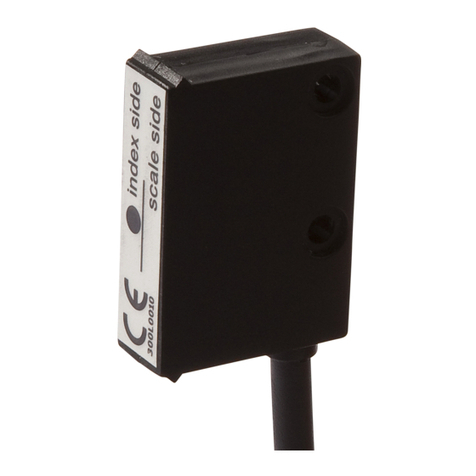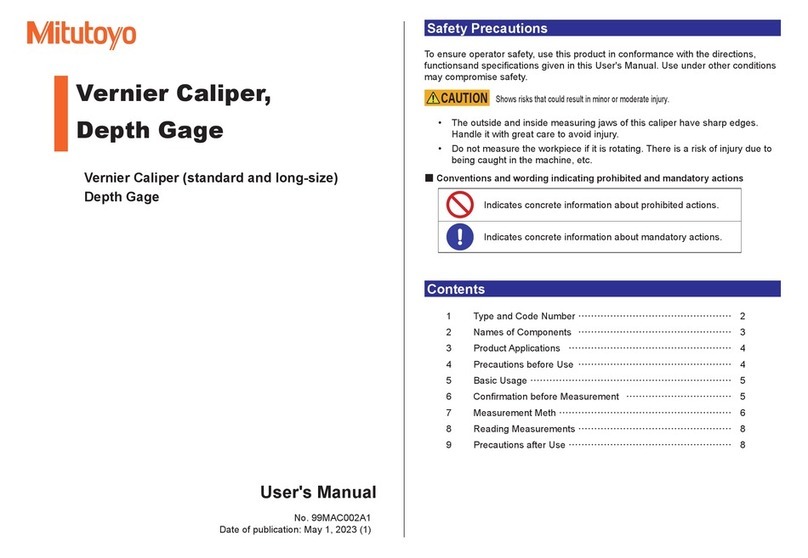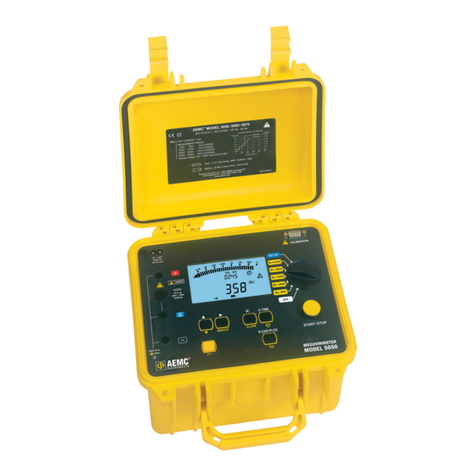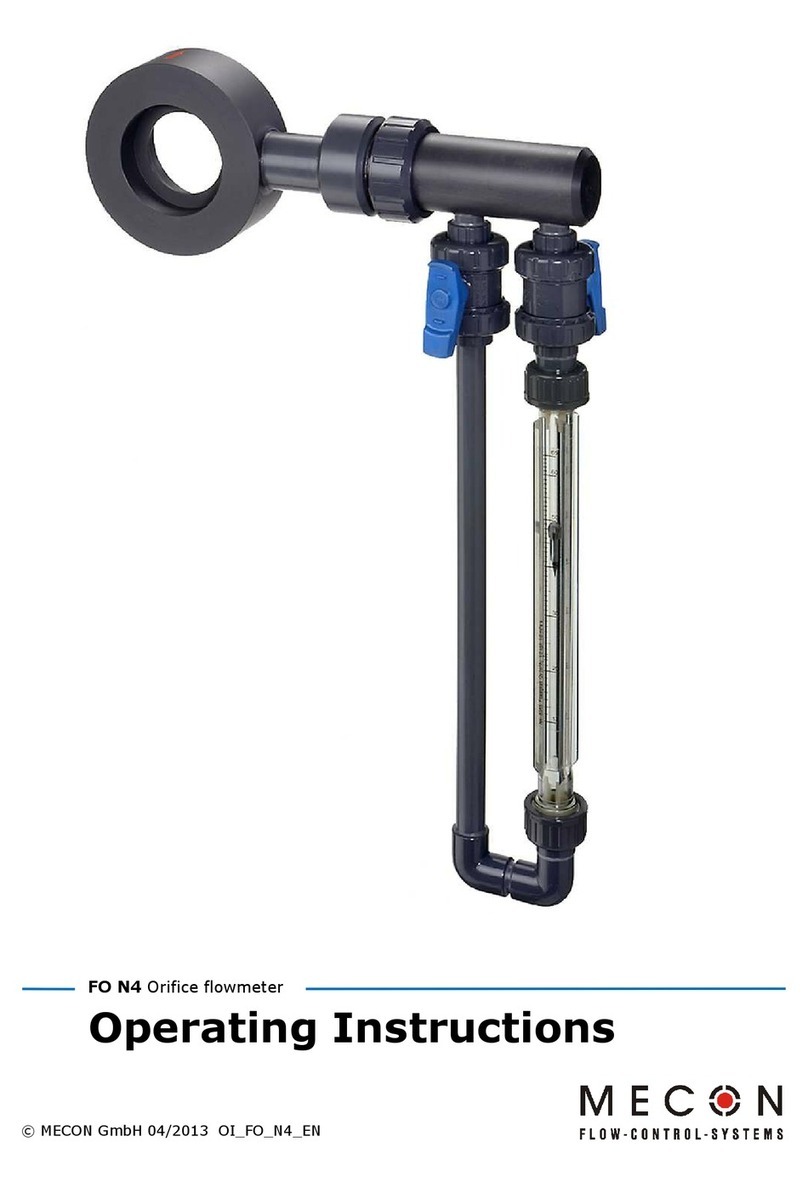DayTronic 4030 User manual

MODEL
4030
SINGLE-CHANNEL
AC LVDT INSTRUMENT
SB.5
4000
Instrument Series
INSTRUCTION MANUAL

Copyright © 1996, Daytronic Corporation. All rights reserved.
No part of this document may be reprinted, reproduced, or used in any form or by
any electronic, mechanical, or other means, including photocopying and recording,
or in any information storage and retrieval system, without permission in writing
from Daytronic Corporation. All specifications are subject to change without notice.

MODEL
4030
SINGLE-CHANNEL
AC LVDT INSTRUMENT
INSTRUCTION MANUAL
Model 4030 Instruction Manual, v. SB.5
Pub. No. 4030M.5, Issued 10/96
Part No. 91472
Daytronic Corporation
Dayton, OH
www.daytronic.com


1. Introduction
a. Description and Specifications ............................................. 1.1
b. Physical Layout .................................................................... 1.5
c. Panel Mounting .................................................................... 1.8
d. Standard Channel Configuration ......................................... 1.9
e. Standard Logic Configuration .............................................1.10
f. Using the Front-Panel Setup Buttons .................................1.12
g. Low Battery Warning .......................................................... 1.18
2. Setup
a. Transducer Cabling ............................................................. 2.1
b. Powerup
1. AC Operation ................................................................. 2.5
2. DC Operation ................................................................ 2.6
c. Adjusting LCD Viewing Angle .............................................. 2.8
d. Selecting a Channel for Display .......................................... 2.9
e. Channel Calibration ........................................................... 2.10
f. Setting Channel Filters ...................................................... 2.11
g. Scaling the Bargraph Display ............................................ 2.12
h. Defining Limit Zones .......................................................... 2.13
i. Logic I/O Connections ....................................................... 2.14
j. Analog Output Connections .............................................. 2.16
3. Operation: Use of Front-Panel Buttons ............................... 3.1
Appendix A: Complete Standard Configuration ......................... A.1
Appendix B: 4030/Computer RS-232-C Connections ............... B.1
Appendix C: Legend and Indicator Annunciation ...................... C.1
Appendix D: Channel Linearization ........................................... D.1
Appendix E: Changing the Battery ............................................ E.1
i
Contents
Section Page

A to D
Conversion
Real-Time
Math
Processing
Signal
Conditioning
Communi-
cations &
Memory
Process
Control
Displays &
Buttons
Transducer
Input(s)
1.a Model 4030 Description and Specifications
1.1
General 4030 Features
•+ – x ÷ √
•Digital Max/Min
•Constants
•Limits (7 zones,
including "Safety"; can
be used to generate
logic control outputs or
to trigger predefined
command sequences
automatically)
•Tare offset
•Scalable 51-segment
bargraph with end-
point indication
•Backlit 0.6-inch LCD
with adjustable viewing
angle and limit-
triggered flashing
•Independently settable
dual-limit displays
•RS-232-C I/O
•Port for optional
keyboard
•Simple step-through
configuration setup
and review via front
panel
•Battery-backed data
and configuration
storage
•Scalable 10-V analog
output for strip-chart
recording, etc.
•8 TTL-level logic I/O's
for annunciation,
process control, and
automatic command
execution
•16-bit (±32000 count)
•optional internal
linearization (up to 15
variable-length
segments)
•Excitation
•"y = mx + b" scaling
•Analog and digital
filtering

The Model 4030 is a single-channel instrument for measurement of
displacement, force, pressure, and other parameters obtained with a
variable reluctance transducer or linear variable differential
transformer (LVDT)—see "Transducer Types," below. The 4030's
sensitivity range is
automatically
adjusted by the microprocessor to
accommodate full-scale ranges from ±0.010 inches (±0.25 mm) to ±6.0
inches (±15.24 cm). A "tare" function is preprogrammed for the LVDT
input, and may be activated by a front-panel push button. Via front-
panel buttons, you can also display and reset MAXIMUM, MINIMUM,
and "MAX minus MIN" values for the "tared" analog input.
Unless otherwise specified at the time of order, your Model 4030 has
been set, prior to shipment, to a
standard configuration
. THIS
CONFIGURATION IS FULLY ADEQUATE FOR MOST APPLICA-
TIONS, AND LETS YOU CONTROL BASIC INSTRUMENT SETUP
AND OPERATION SOLELY BY MEANS OF THE SIX FRONT-PANEL
PUSH BUTTONS AND THE EIGHT REAR-PANEL LOGIC I/O. A full
listing of your 4030's standard configuration is given in Appendix A.
Like all 4000 Series instruments, however, the 4030 can be rapidly and
easily reprogrammed in the field, to provide a variety of unique
application solutions. For such reprogramming you can use either
• an optional Model 10P80D Extended Keyboard that plugs directly
into the rear of the 4030 unit, or
• the optional StartPAC 100 Software (Model GS-SP100).* This
software applies to ALL Daytronic RS-485 networkable instru-
ments, and offers a number of valuable utilities for terminal
emulation, node configuration, network monitoring, data display
and logging, etc. IT IS SUPPLIED FREE OF CHARGE WITH ALL
4000 SERIES MODELS. For details on the installation and
operation of StartPAC 100, see the
StartPAC 100 Instruction
Manual
.
StartPAC 100 lets a connected computer serve as a "dumb" terminal
for entry of the specific MNEMONIC COMMANDS required to repro-
1.2
Model 4030 Description and Specifications 1.a
* Alternatively, you can use any of a number of commercially available
terminal emulation programs
to issue commands directly to the 4030.

gram the 4030. These commands may also be issued directly to the
4030 via the optional Extended Keyboard. Commands which are
common to all 4000 Series models are described in detail in the
optional 4000 Series
System Instruction Manual
. IT IS RECOM-
MENDED THAT YOU STUDY THE
SYSTEM INSTRUCTION
MANUAL
BEFORE YOU ATTEMPT ANY RECONFIGURATION OF
YOUR MODEL 4030 BEYOND THAT DISCUSSED IN THE
APPENDICES OF THE PRESENT MANUAL.
See Appendix B of the present manual for direct RS-232-C connections
between the 4030 and a computer or printer.
Unless otherwise specified, every 4030 comes with the standard
engineering-unit legends
and
button-function indicators
shown in Fig. 1.
Different legend/indicator films may be optionally obtained. Via optional
keyboard or computer, you can instruct the 4030 to light any one or a
combination of given legends and indicators. See Appendix C for
"Legend and Indicator Annunciation."
Appendix D describes a special calibration procedure that may be
applied to a
nonlinear
sensor input, instead of the normal "TWO-POINT
(DEADWEIGHT)" technique (Section 2.e).
NOTE: WITH THE EXCEPTION OF APPENDIX C, THE PRESENT
MANUAL WILL ONLY TREAT PROCEDURES AND CONSIDERA-
TIONS WHICH ARE RELEVANT TO THE 4030 "STANDARD
CONFIGURATION" AND WHICH DO NOT REQUIRE A CONNECTED
COMPUTER OR KEYBOARD. FOR INFORMATION ON THE FULL
FUNCTIONALITY OF YOUR MODEL 4030, SEE THE OPTIONAL
SYSTEM INSTRUCTION MANUAL
.
MODEL 4030 SPECIFICATIONS (for general 4000 Series Physical,
Electrical, and Environmental specifications—including Logic
I/O—see Appendix A of the 4000 Series
System Instruction
Manual)
:
Transducer Types: 5- or 7-wire LVDT's capable of 4000-Hz operation
and having primary impedance of 80 ohms or greater; 3- or 5-wire
variable reluctance transducers.
1.a Model 4030 Description and Specifications
1.3

Sensitivity Range: Automatically adjusted by microprocessor to
accommodate full-scale ranges from ±0.010 inches (±0.25 mm) to
±6.0 inches (±15.24 cm), when used with Daytronic or equivalent
transducers.
Excitation: Nominal 3.0 V-AC (rms) at 4000 Hz; 40 mA (rms),
maximum.
Amplifier:
Common-Mode Range:
±5 V operating; ±12 V without instrument damage.
Common-Mode Rejection Ratio: infinite at DC and 60 Hz; -60 dB at
3 kHz.
Input Impedance: Differential: 400 kilohms; Common-Mode: 100
kilohms.
Offset: Initial: ±3% of full scale; vs. temperature: ±20 ppm/°C; vs.
time: ±0.01% of full scale / month
Gain Accuracy:
±0.02% of full scale,
typical
, following calibration.*
Gain Stability:
vs. temperature: ±50 ppm/°C; vs. time: ±20 ppm/month.
Filter (per channel): 3-pole modified Butterworth; 3 dB down at 10 Hz;
60 dB down at 100 Hz.
Step Response Settling Time (Full-Scale Output):
To 1% of final value: 130 milliseconds.
To 0.1% of final value: 150 milliseconds.
To 0.02% of final value: 200 milliseconds.
Analog Output: ±10 V, microprocessor driven and scaled, ±1 mV
resolution.
Accuracy: 0.05% of current voltage reading ± 2 mV.
Output Bandwidth: 40 Hz max.
* Initial (uncalibrated) inaccuracy may be as great as ±3% of full scale.
Maximum error that could occur upon replacement of a Model 4030
not
followed by calibration
is ±6% of full scale.
Maximum allowable count tolerance is 0 ± 601 (for ZERO) and 20000 ± 601
(for SPAN, where "m" = 20000).
1.4
Model 4030 Description and Specifications 1.a

Study the following diagrams to acquaint yourself with your 4030's most
important front and rear elements.
1.b Physical Layout
1.5
inches
milli/in
Bargraph
Low Endpoint
(LEP)
"Low-Low" Limit
(LLL)
Setup and Special
Function Buttons
Engineering-
Unit Legends*
Channel No.
and
Mnemonic
Display
mm
SET
UP
Bargraph
High Endpoint
(HEP)
"High-High" Limit
(HHL)
"Low" Limit
(LOL) "High" Limit
(HIL)
Button
"RUN-TIME
FUNCTION"
Indicators* Button Activity
Indicator
ON
LINE
F1 F2 F4 SET
UP
F3 F5
* Standard film shown.
(F1 = LIVE DISPLAY
F2 = [NOT USED]
F3 = TARE
F4 = MAX/MIN/MAX-MIN STEP
F5 = MAX/MIN RESET
—see Section 3)
CHAN STEP
44000
Fig. 1 4030 Front Panel

Physical Layout 1.b
1.6
Analog Output
Connector
(see Fig. 10)
1
O
Analog Input
Connector
(see Figs. 5, 6)
Logic I/O
Connector
(see Figs. 4, 9)
ON-OFF
Switch Fuse
AC Power
Connector
Connector
for Optional
Keyboard
Voltage
Selector
Switch
RS-232-C
Interface
Connector
(see App. B)
Panel-
Mount
Clamp
Screw
Fig. 2(a) 4030 Rear Panel (AC Power)

1.7
1.b Physical Layout
Analog Output
Connector
(see Fig. 10)
1
O
Analog Input
Connector
(see Figs. 5, 6)
Logic I/O
Connector
(see Figs. 4, 9)
ON-OFF
Switch Fuse
Connector
for Optional
Keyboard
RS-232-C
Interface
Connector
(see App. B)
DC Power
Connector
(see Fig. 7)
Panel-
Mount
Clamp
Screw
Fig. 2(b) 4030 Rear Panel (DC Power)

You can easily mount a Model 4030 in your own precut panel. Cutout
dimensions for a
panel-mounted
unit are standard DIN (see Fig. 3);
panel thickness should not exceed 6 mm (0.24 in).
When mounting a 4030,
DO NOT REMOVE THE FRONT BEZEL.
Simply unscrew the two rear-panel CLAMP SCREWS and slide the
CLAMP SLIDES rearwards out of their grooves. Insert the 4030 unit
through the panel cutout,
from the front of the panel
(if the unit has
rubber feet, these will have to be removed). Then reinstall the CLAMP
SLIDES, and tighten the CLAMP SCREWS until the instrument is
securely mounted.
1.8
Panel Mounting 1.c
A
A
138 ±1.0 mm
(5.43 ±0.04 in)
68 ±0.7 mm
(2.68 ±0.03 in)
CLAMP SLIDE
CLAMP
SCREW
Fig. 3
4030 Panel Mounting

Channel No. Channel Function
1 "LIVE" INPUT CHANNEL
This channel represents the 4030's
conditioned analog
input
. Sensor calibration is performed on this channel, as
explained in Section 2.e and Appendix E.
5 "LIVE" INPUT WITH TARE
This channel represents the value of Channel 1
minus
the current "tare" offset for the input
(that is, the value of
Channel 1 that existed when the front-panel "TARE"
button was last pressed). Active control limits will
normally operate on the basis of this channel—see
Section 1.e.
6 "MAXIMUM" VALUE OF CHN. 5
This channel represents the
most positive
value of
Channel 5 since "MAX" measurement was last reset via
the front-panel "MAX/MIN RESET" button.
7 "MINIMUM" VALUE OF CHN. 5
This channel represents the
least positive
value of
Channel 5 since "MIN" measurement was last reset via
the front-panel "MAX/MIN RESET" button.
8 "MAX minus MIN" VALUE OF CHN. 5
This channel represents the existing
net difference
between Channel 6 and Channel 7.
19 ANALOG OUTPUT
This channel represents Channel 5 ("tared" analog input),
scaled to a full range of ± 10 V-DC. It may be used for
strip-chart recording, input to other systems, or general-
purpose signal monitoring. For rescaling and connection
of the analog output, see Section 2.j.
The 4030's Channel Nos. 4 and 14-16 are used as intermediate result
registers or reference channels, and will not normally be displayed.
The remaining scanned channels (Nos. 2, 3, 9-13,17, and 18) are not
used in the standard 4030 configuration.
1.d Standard Channel Configuration
1.9

Your 4030 provides eight logic input/output bits in
open-collector,
negative-true
form, where the "Logic 1" state is defined as nominal
0
V-DC
and "Logic 0" as nominal
+5 V-DC.
The standard logic I/O
configuration is shown in Fig. 4, below, with reference to the 10-terminal
Logic I/O Connector on the rear of the 4030. For recommended logic
interconnections, see Section 2.i.
You can use the seven logic control outputs to actuate solenoid valves,
illuminate panel displays, sound alarms, start and stop motors or
pumps, initiate and control safety shut-down sequences, and perform
many other automation tasks that require "intelligent" switching, even of
substantial amounts of power. These are
nonlatching
outputs; each
terminal will return to
Logic 0
as soon as the corresponding limit
violation ceases to occur. For "Defining Limit Zones," see Section 2.h.
Standard Logic Configuration 1.e
1.10
01234567+5 GD LOGIC LOW
TO ENABLE
(see Fig. 9)
Unassigned
CHN. 5 IN "ABOVE BARGRAPH" ZONE
CHN. 5 IN UPPER "DANGER" ZONE
CHN. 5 IN UPPER "CAUTION" ZONE
Logic Outputs:
CHN. 5 IN SAFETY (NO VIO) ZONE
CHN. 5 IN LOWER "CAUTION" ZONE
CHN. 5 IN LOWER "DANGER" ZONE
CHN. 5 IN "BELOW BARGRAPH" ZONE
Fig. 4 4030 Standard Logic Outputs

Bit No. Logic Function
0 "BELOW BARGRAPH" VIOLATION OUTPUT
Terminal 0 will be at a
Logic 1
(0 V-DC) level whenever
the reading of Channel 5 is less than the current "LEP"
value for that channel.
1 "LOW LOW" VIOLATION OUTPUT
Terminal 1 will be at a
Logic 1
(0 V-DC) level whenever
the reading of Channel 5 is less than the current "LLL"
value for that channel and greater than or equal to the
current "LEP" value.
2 "LOW" VIOLATION OUTPUT
Terminal 2 will be at a
Logic 1
(0 V-DC) level whenever
the reading of Channel 5 is less than the current "LOL"
value for that channel and greater than or equal to the
current "LLL" value.
3 "OK" (NO VIOLATION) OUTPUT
Terminal 3 will be at a
Logic 1
(0 V-DC) level whenever
the reading of Channel 5 is greater than or equal to the
current "LOL" limit value and less than or equal to the
current "HIL" limit value for that channel.
4 "HIGH" VIOLATION OUTPUT
Terminal 4 will be at a
Logic 1
(0 V-DC) level whenever
the reading of Channel 5 is greater than the current "HIL"
value for that channel and less than or equal to the
current "HHH" value.
5 "HIGH HIGH" VIOLATION OUTPUT
Terminal 5 will be at a
Logic 1
(0 V-DC) level whenever
the reading of Channel 5 is greater than the current
"HHH" value for that channel and less than or equal to
the current "HEP" value.
6 "ABOVE BARGRAPH" VIOLATION OUTPUT
Terminal 6 will be at a
Logic 1
(0 V-DC) level whenever
the reading of Channel 5 is greater than the current
"HEP" value for that channel.
1.11
1.e Standard Logic Configuration

Study this manual section carefully to familiarize yourself with the
general operation of your 4030's front-panel buttons when they are in
"SETUP" mode. Specific setup parameters—such as "HIGH END-
POINT (HEP)", "FILTER (FIL)," "LCD," etc.—are explained in detail in
Section 2.
The 4030 provides
instant visual feedback
for its front-panel buttons.
Thus, pressing any button will light the green ON LINE indicator. This
indicator is located in the lower right-hand corner of the 4030 front
panel (see Fig. 1). It will remain lit as long as the button is pressed.
The 4030's six front-panel buttons greatly simplify the basic setup
procedure. With them you can quickly review in sequence the existing
numeric "configuration parameters"
of any selected channel. At the
same time you can easily reset any displayed parameter to any
allowable value. The LEFT ARROW button lets you select a displayed
digit
or
decimal-point location.
The UP ARROW and DOWN ARROW
buttons let you change as desired the numeric value of the parameter,
its polarity, and/or (if it is a calibration value) its decimal-point location.
The new number goes into effect as soon as you exit "SETUP," and is
automatically stored in battery-backed memory.
1. Entering "Setup" Mode
To enter "SETUP" mode,
PRESS THE BUTTON
WARNING!
DO NOT USE A SHARP OR POINTED OBJECT TO
DEPRESS THE FRONT-PANEL BUTTONS.
SERIOUS INSTRUMENT DAMAGE COULD RESULT.
ALSO, DO NOT SPLASH LIQUID ON THE FRONT
OF THE UNIT. THIS CAN CAUSE THE BUTTON
SWITCHES TO SHORT OUT.
Using the Front-Panel Setup Buttons 1.f
1.12
SET
UP

Each of the six buttons will now assume its "SETUP" function, as
designated by the actual button label (for each button's "RUN-
TIME" function, see Section 3.) The small mnemonic display under
the 4030's unit legends will alternately read "DIS" and the number
of the channel that was on display when you pushed the SETUP
button. The main LCD display will read the number of the currently
selected channel. The rightmost digit of the main LCD display will
now flash, indicating that it is the "active" digit. NOTE: the smaller
display will continue to read the number of the
initially selected
channel—even though you may call one or more other channels to
the main display during the setup procedure—and will alternate
this number with the
mnemonic
of the parameter presently under
consideration. On exiting "SETUP," the smaller display will show
the number of the channel currently displayed by the main LCD.
2. Selecting a Channel for Setup and/or Review
If, after pressing SETUP, you wish to review and/or reconfigure the
channel whose number is now being displayed,
PRESS THE BUTTON
This will invoke the channel's actual "parameter list," beginning
with "LCT."
If this is
not
the channel you wish to review and/or reconfigure,
PRESS THE BUTTON OR THE BUTTON
one or more times until you arrive at the desired channel. Then
press the STEP button to invoke its parameter list. When you exit
"SETUP" mode, the last channel to have been thus selected will
continue to be displayed.
At any time during the setup procedure, you can move back up to
the "DIS" parameter of the channel currently on display. Simply
PRESS THE BUTTON
1.13
1.f Using the Front-Panel Setup Buttons
STEP
CHAN

—at which point you can, if desired, move to any other channel via
the UP/DOWN ARROW buttons, as above.
3. Stepping Through a Channel's Parameter List
A given channel's configuration sequence includes the parameters
listed on the next page. These will appear as mnemonics under
the unit-legend display. Their respective
numeric values
will
appear on the main LCD digital display. ONLY THE PARA-
METERS PRINTED IN BOLDFACE ARE TREATED IN THIS
MANUAL. For the remaining parameters, see the optional
System
Instruction Manual.
Channel Configuration Parameters
DIS (DISPLAY) (Section 2.d)
LCT (LOCATE)
LNS (LINEARIZATION SEGMENTS)
F0 (FIRST CALIBRATION POINT) (Section 2.e)
F1* (SECOND CALIBRATION POINT) (Section 2.e)
LEP (LOW ENDPOINT) (Section 2.g)
LLL (LOW LOW LIMIT) (Section 2.h)
LOL (LOW LIMIT) (Section 2.h)
HIL (HIGH LIMIT) (Section 2.h)
HHL (HIGH HIGH LIMIT) (Section 2.h)
HEP (HIGH ENDPOINT) (Section 2.g)
ASN (ASSIGN SATELLITE NUMBER)
FIL (FILTER) (Section 2.f)
BAU (BAUD RATE)
DBS (DATA BITS)
SBS (STOP BITS)
PAR (PARITY)
LCD (LCD VIEWING ANGLE) (Section 2.c)
REL (4000 SOFTWARE RELEASE DATE)
Using the Front-Panel Setup Buttons 1.f
* Applicable only to 4030 Channel 1.
1.14

To move to the next parameter in sequence,
PRESS THE BUTTON
As each parameter appears, you have the option of leaving it as it
is and stepping to the next one by again pressing STEP, or of
modifying its value by means of the "ARROW" buttons. You
cannot backstep through the parameter sequence; you can only
start it over again, via the CHAN button, or continue stepping
forward until you come back around to the desired parameter.
4. Moving the "Active" Digit
As each parameter value appears on the LCD display, its least
significant digit will be
flashing
, to signify that this is the currently
"active" (changeable) digit. You have the option of changing the
value of the "active" digit, as explained in Step 5, or of "activating"
the next digit to the left. To move the "active" digit one digit to the
left,
PRESS THE BUTTON
For "activation" of
decimal points
, see Step 7, below.
NOTE: You cannot move the active digit to the right. If you want to
return to a digit you have already passed, you must continue
moving leftward until you come back around to the desired digit.
5. Modifying the "Active" Digit
To increase the value of the active digit by "1"—that is, to add "+1"
to that number, regardless of its algebraic sign—
PRESS THE BUTTON
To decrease the value of the active digit by "1"—that is, to add "-1"
to that number, regardless of its sign—
PRESS THE BUTTON
1.15
1.f Using the Front-Panel Setup Buttons
STEP
Table of contents
Other DayTronic Measuring Instrument manuals
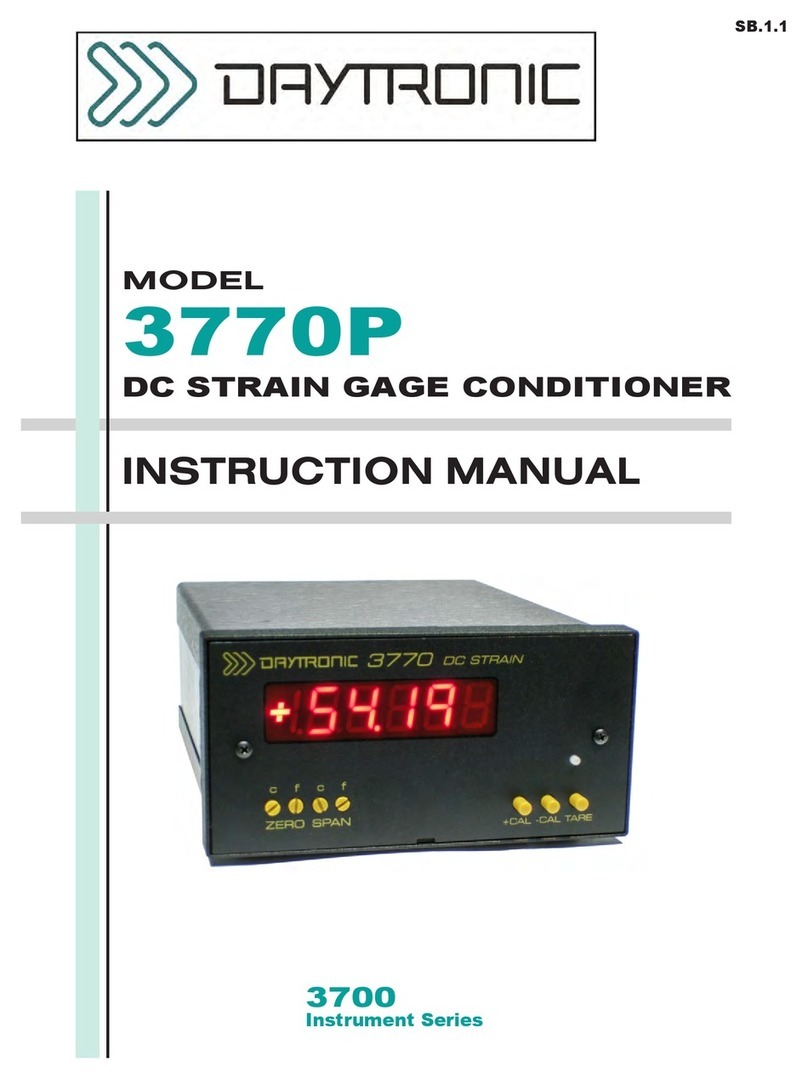
DayTronic
DayTronic 3770P User manual

DayTronic
DayTronic 4500 User manual
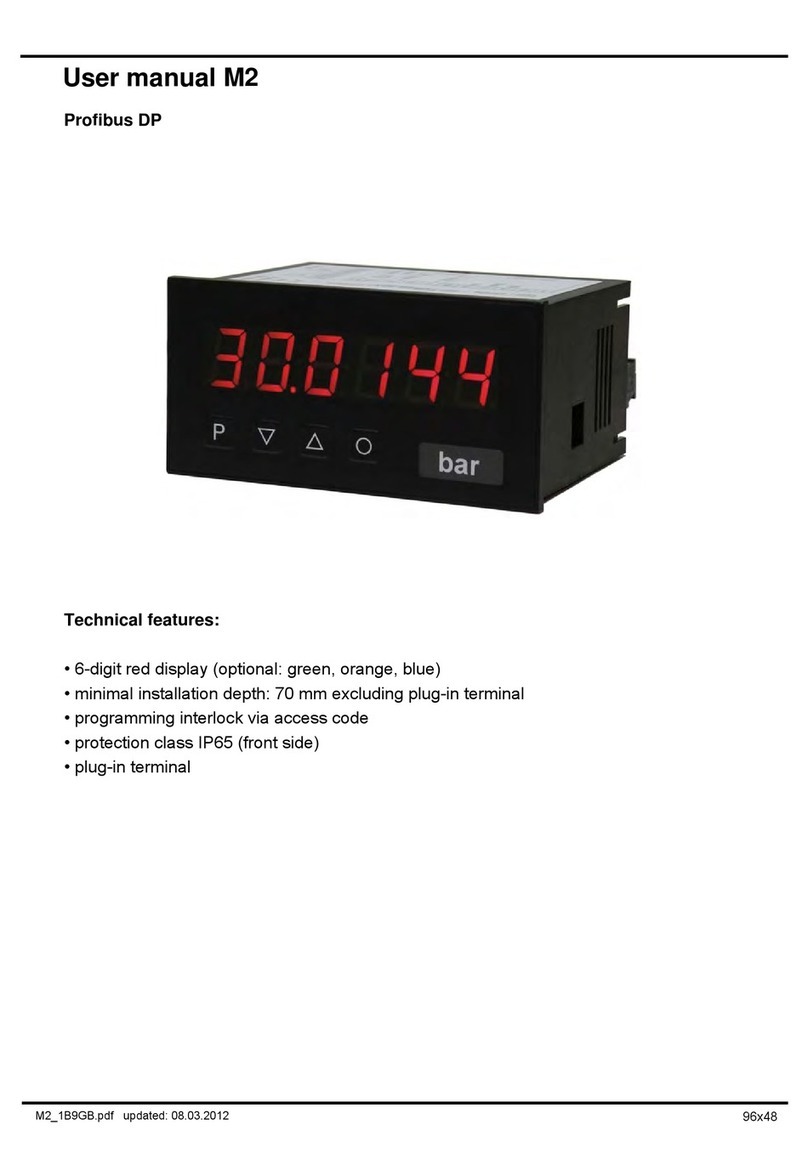
DayTronic
DayTronic M2 User manual
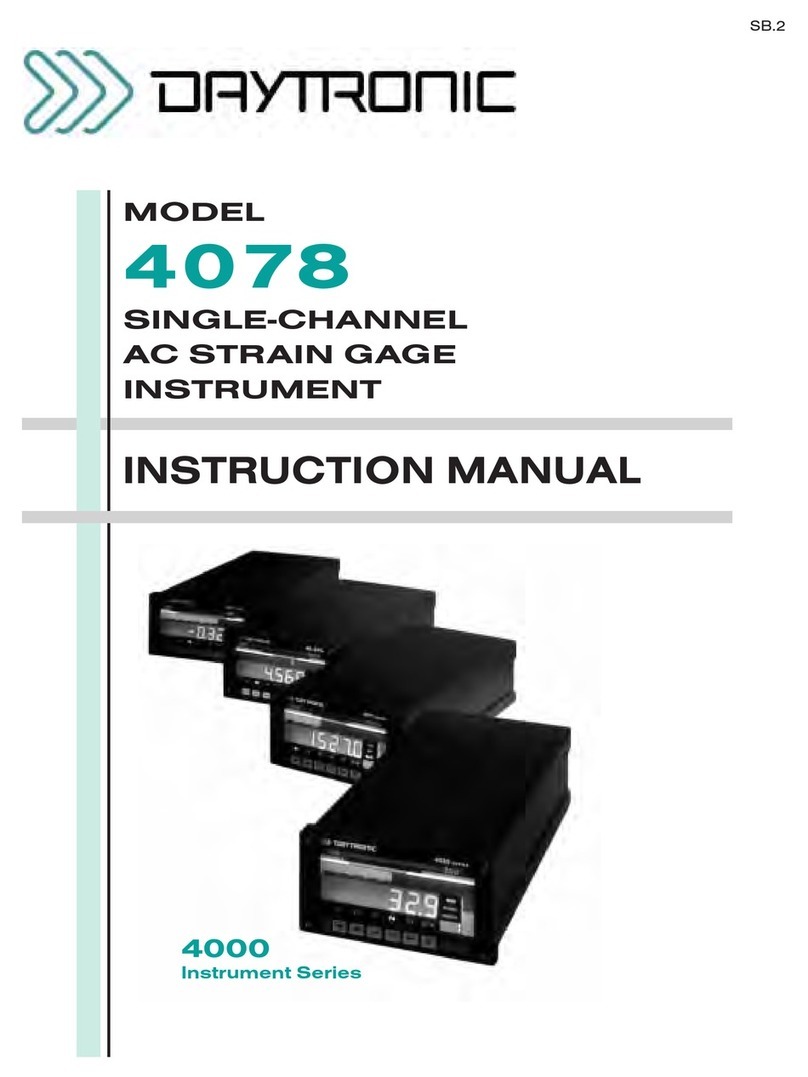
DayTronic
DayTronic 4000 Series User manual

DayTronic
DayTronic 4000 Series User manual
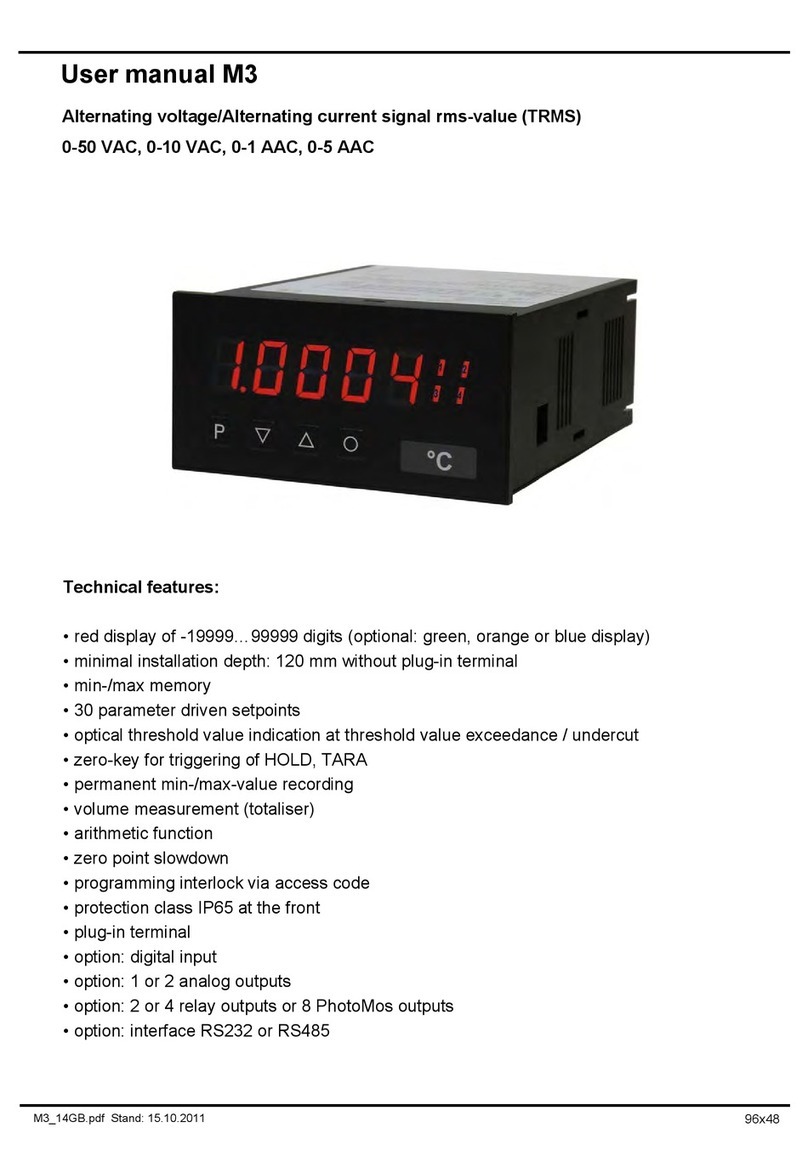
DayTronic
DayTronic M3 User manual

DayTronic
DayTronic TM3 User manual
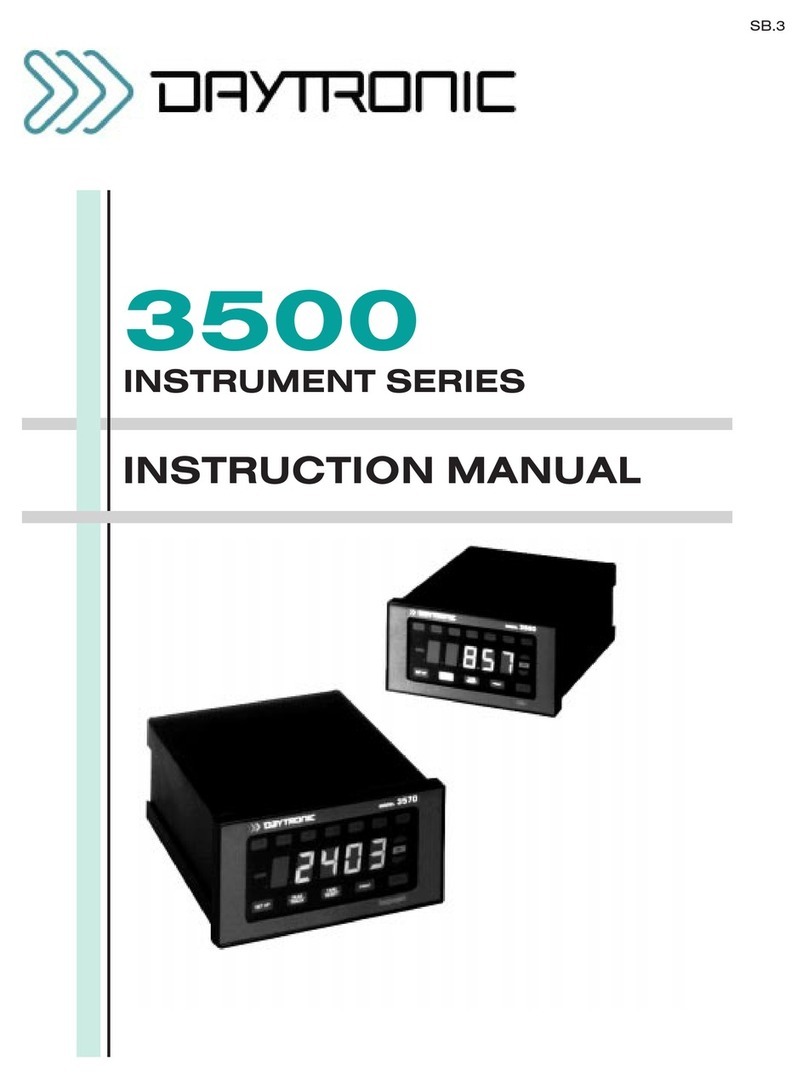
DayTronic
DayTronic 3500 Series User manual
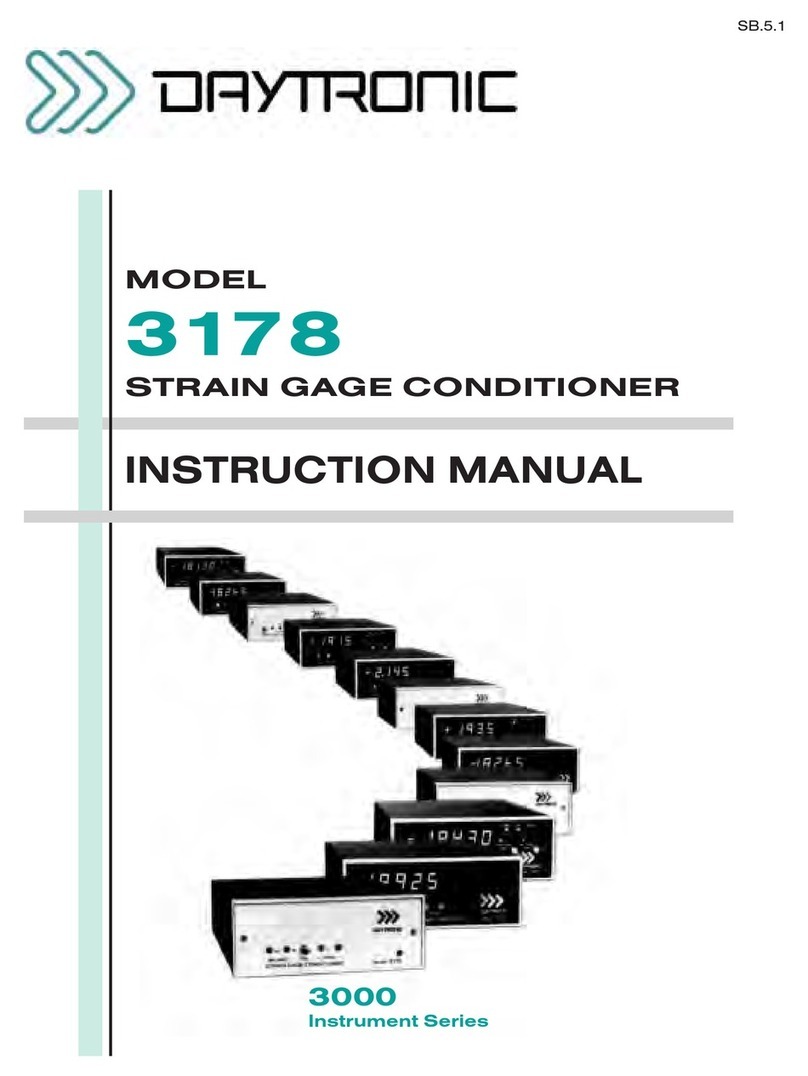
DayTronic
DayTronic 3000 series User manual
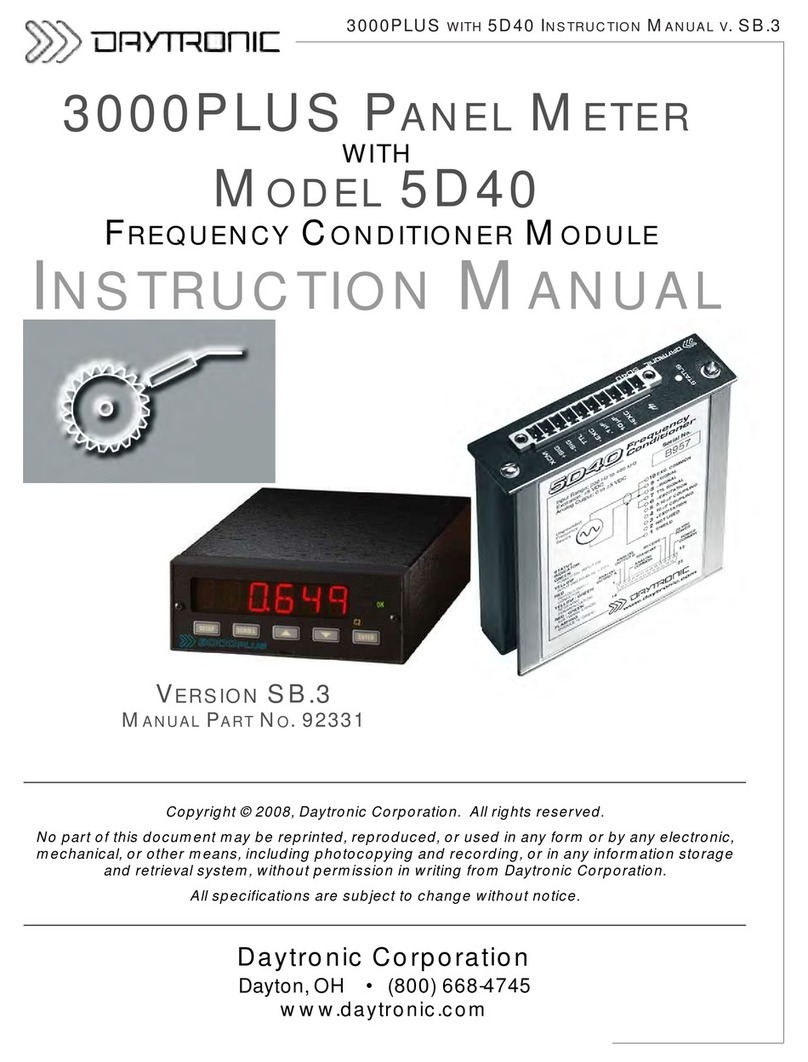
DayTronic
DayTronic 3000PLUS User manual


